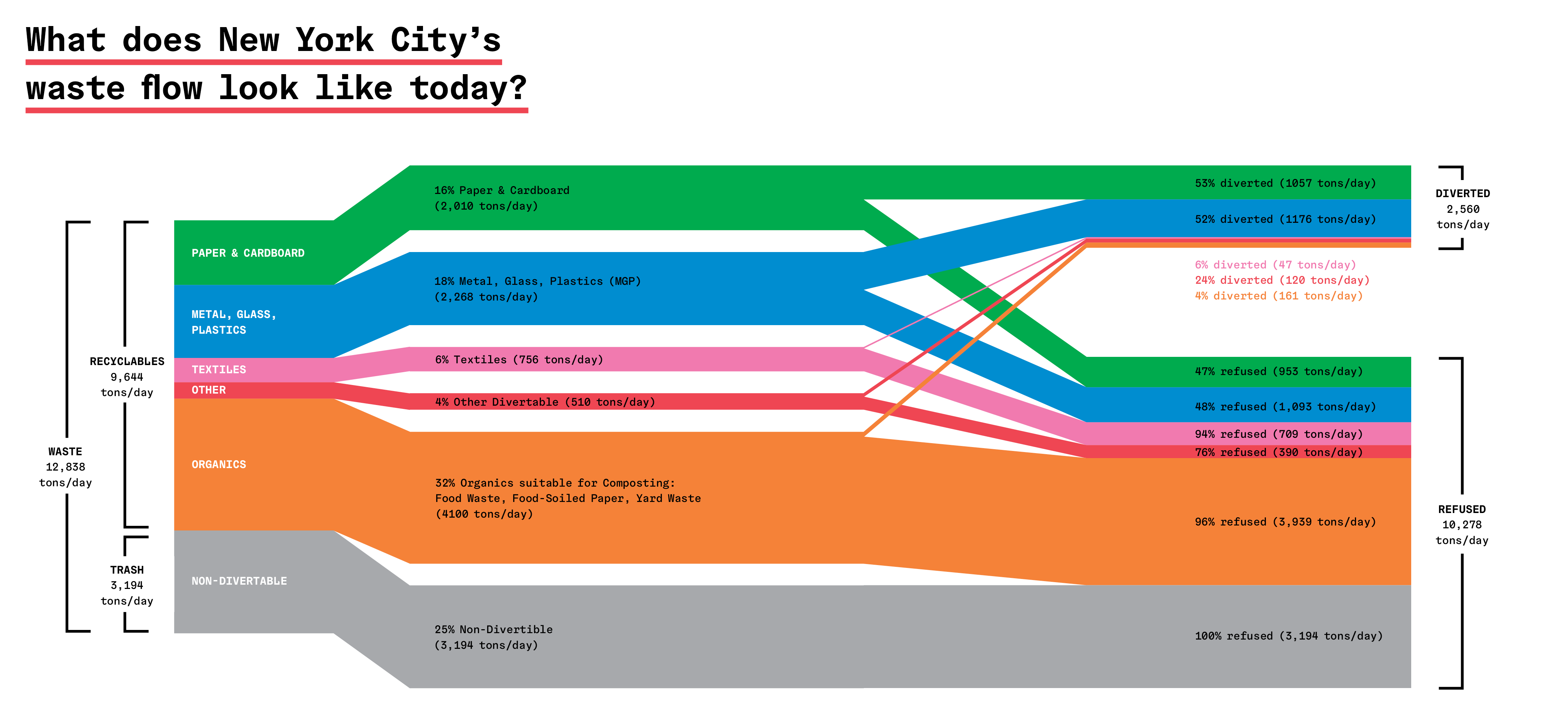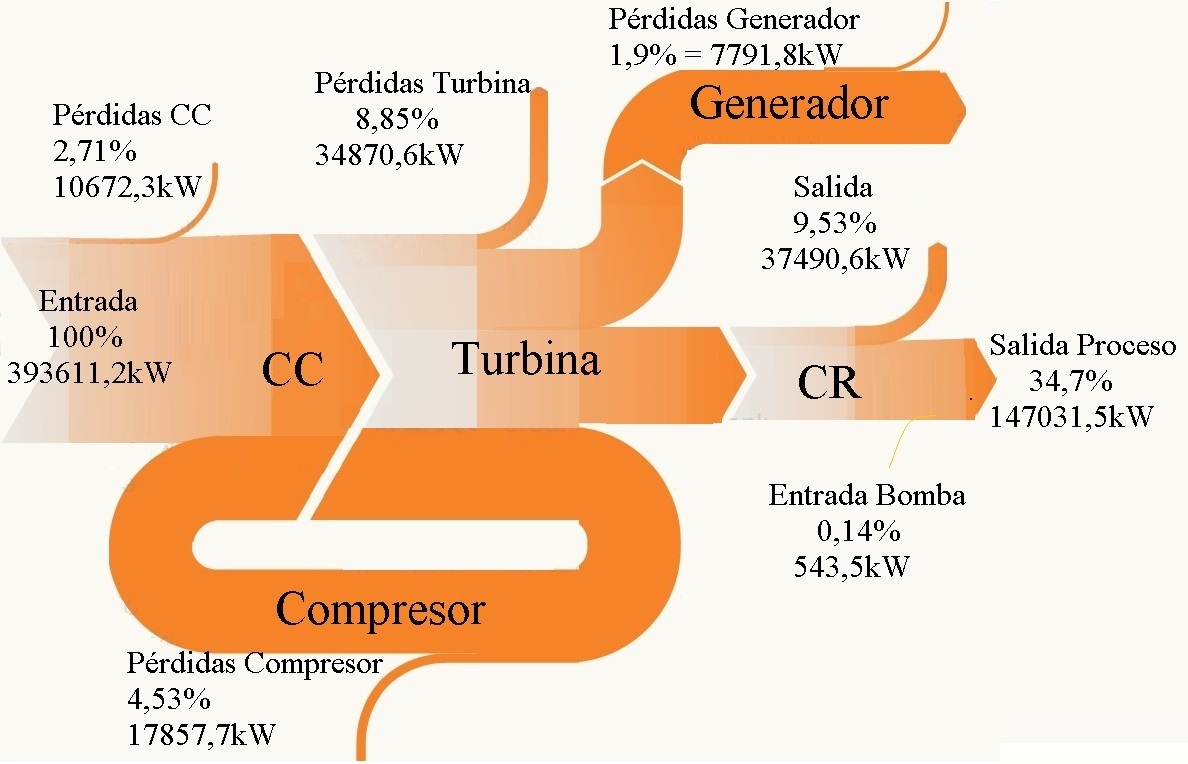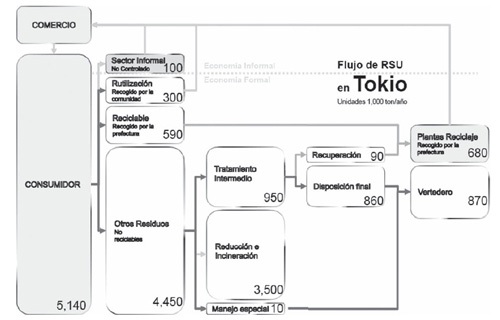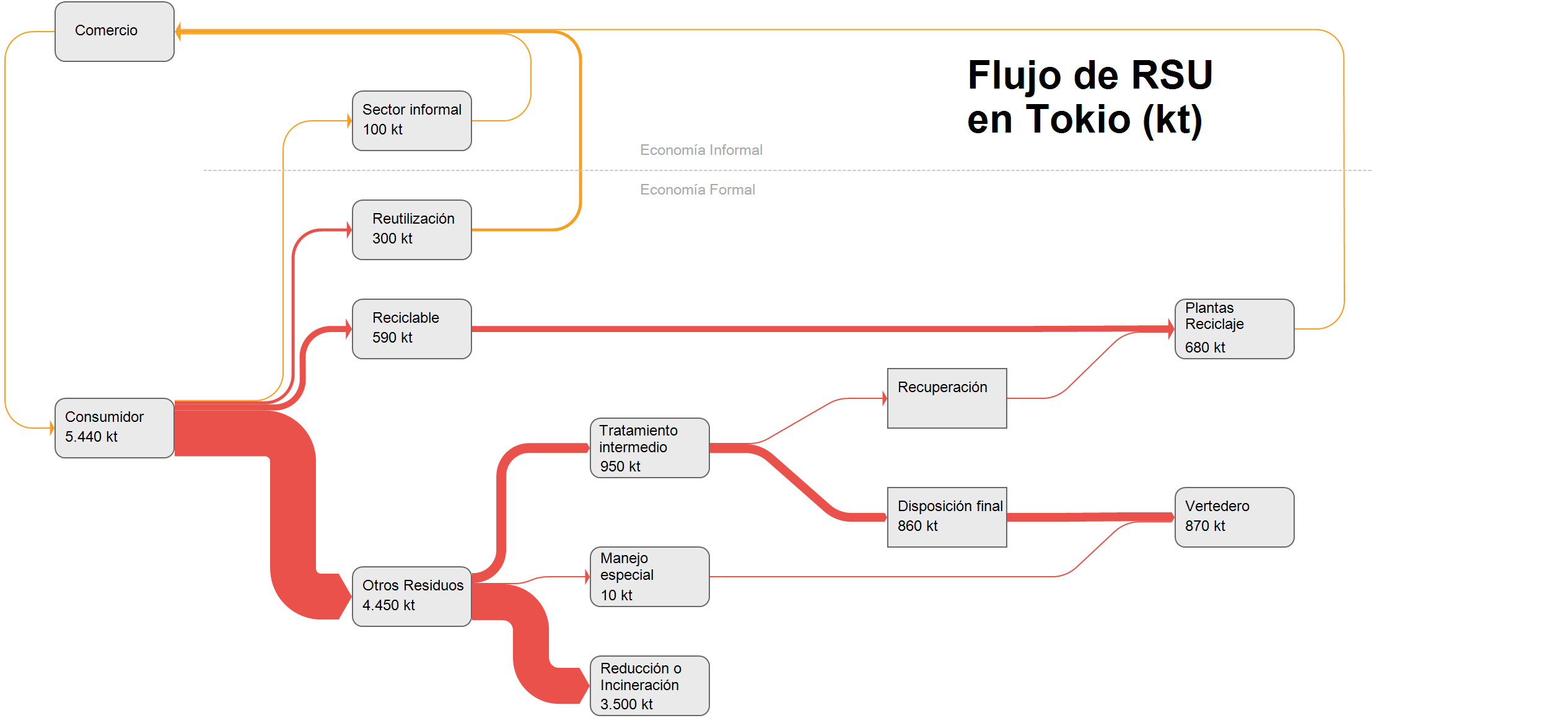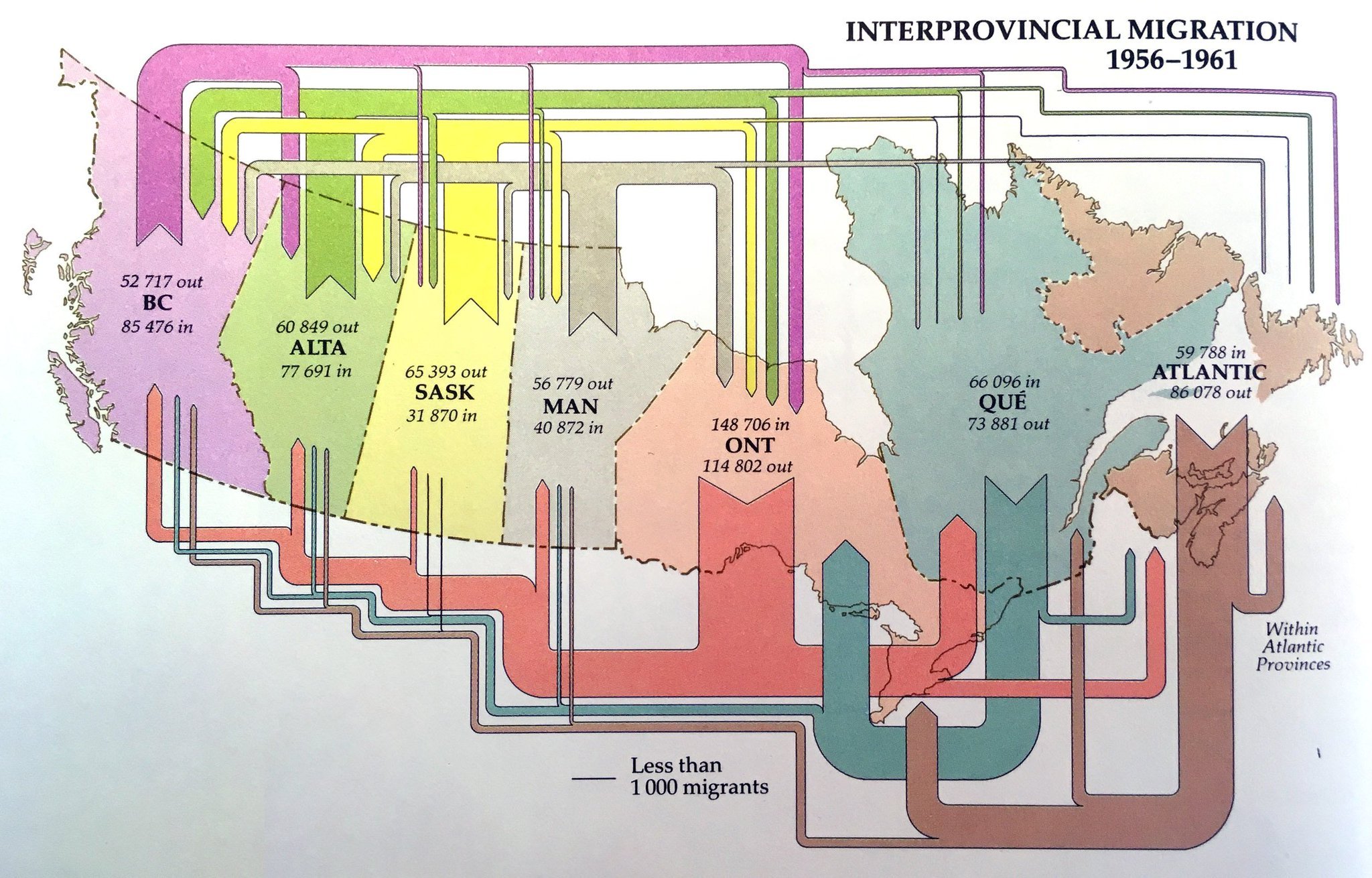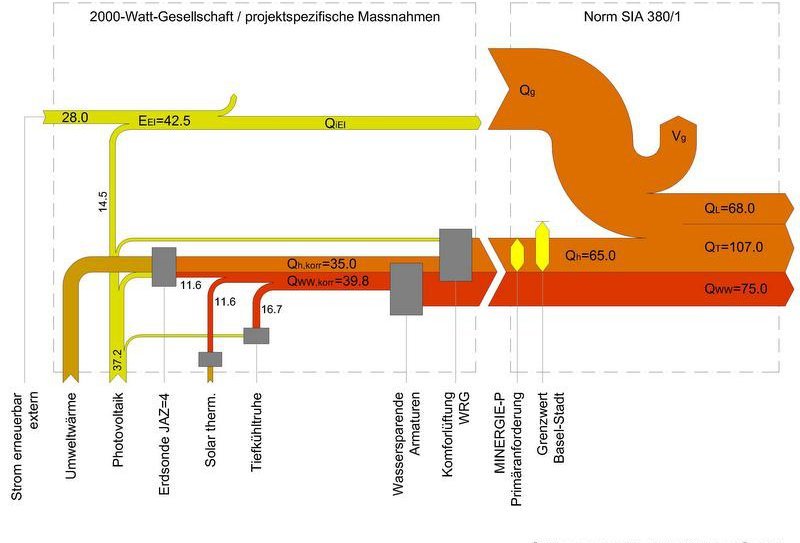Came across an interesting article by Tei Carpenter, ‘Waste Not, Want More: Zeroing In on Designing Waste’ in the Avery Review 33 (September 2018). It describes a transition to a zero waste scenario for New York in 2030.
This is the Sankey diagram for the waste situation today (that is… 2018). An incredible 12,838 tonnes per year day. Of which 75% would theoretically be recyclable. Instead, 80% end up as refuse, while only 20% are “diverted”.
There is also a second Sankey diagram that shows how the city would handle its waste in 2030 with a zero waste strategy. Read the article at Avery Review or download as PDF.
